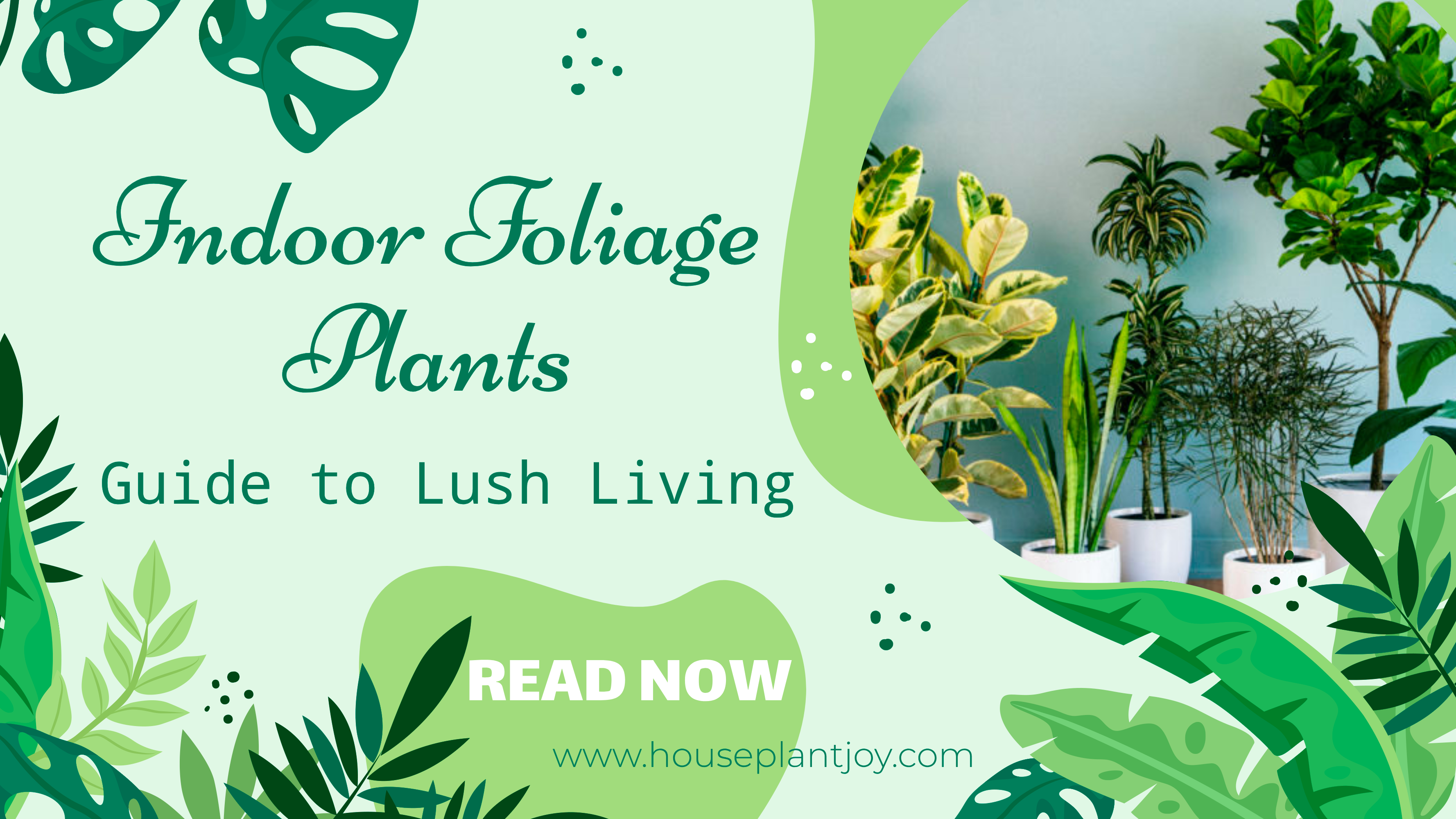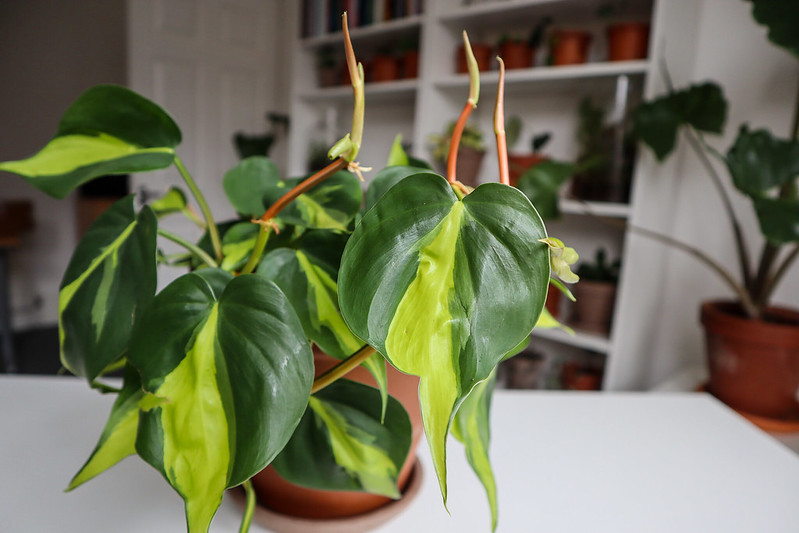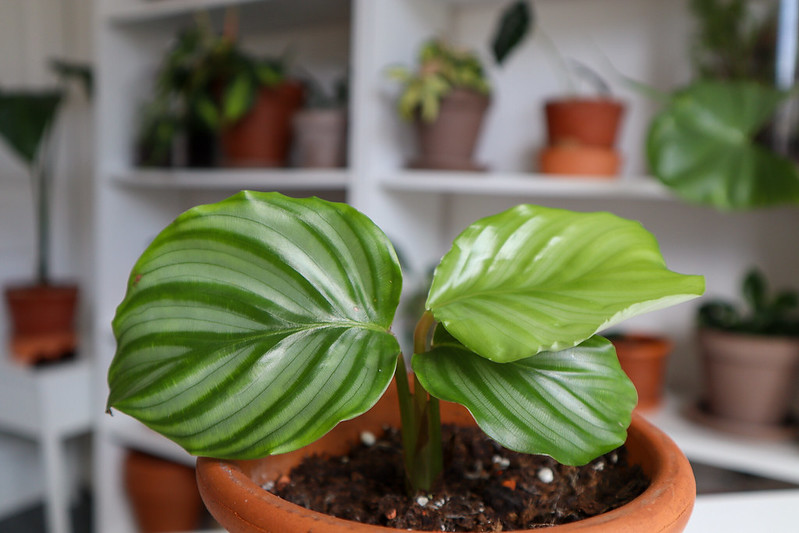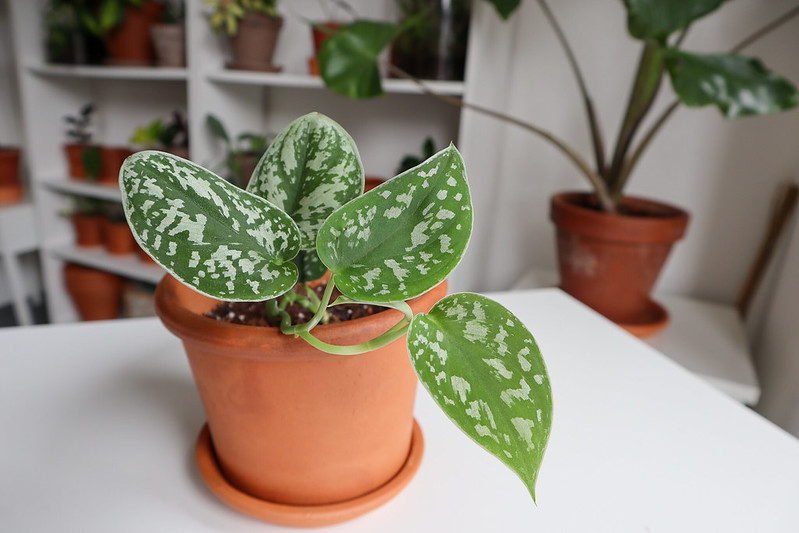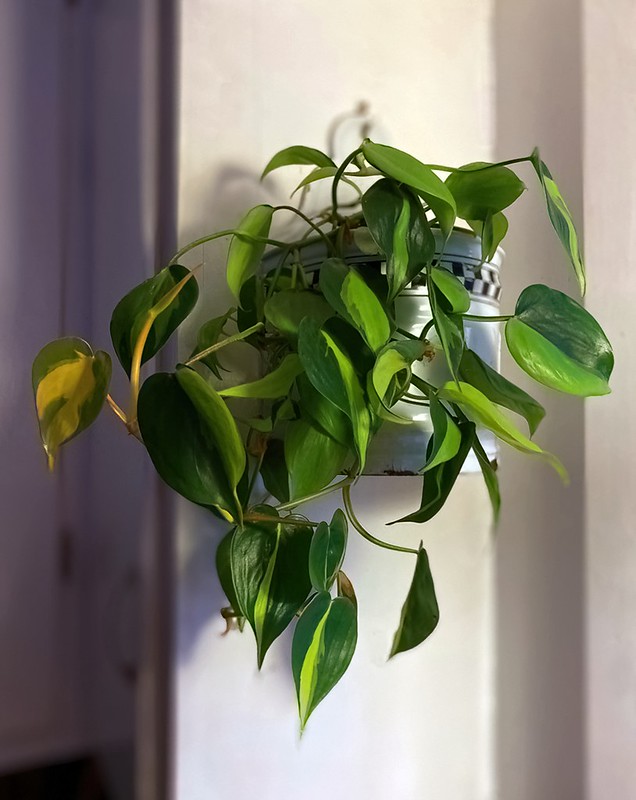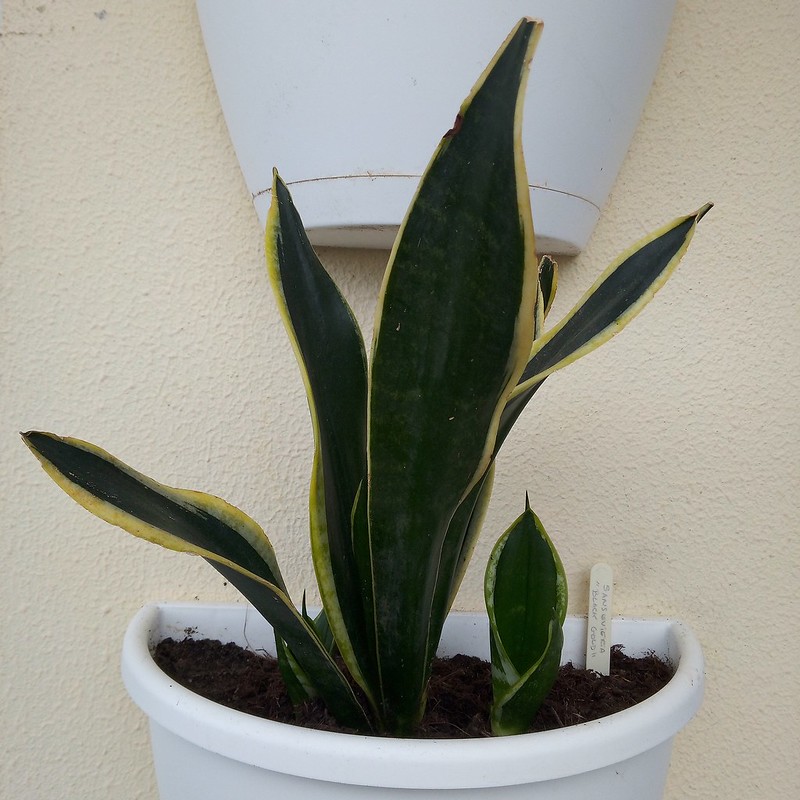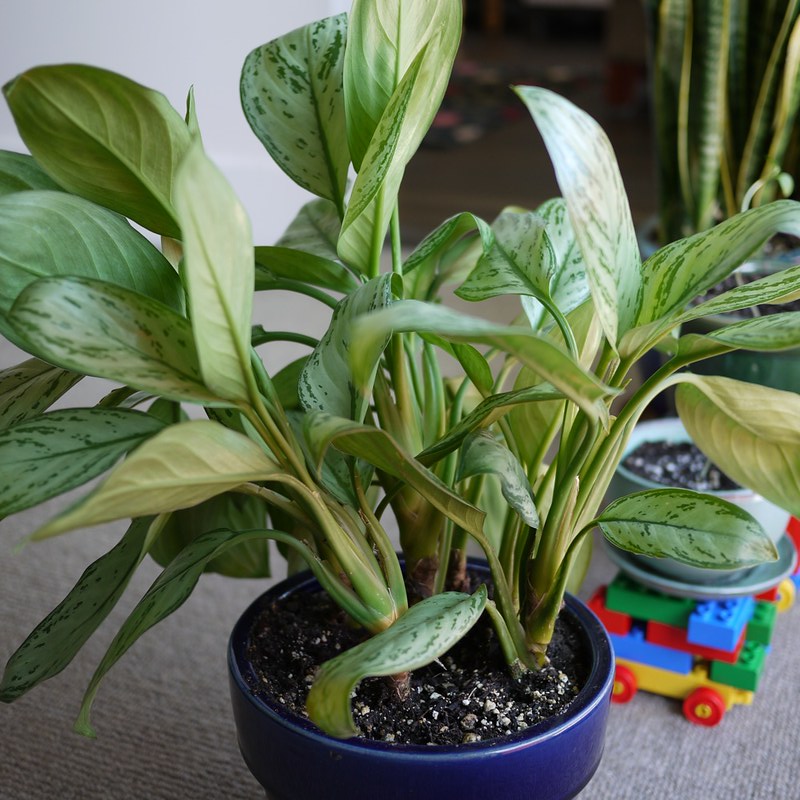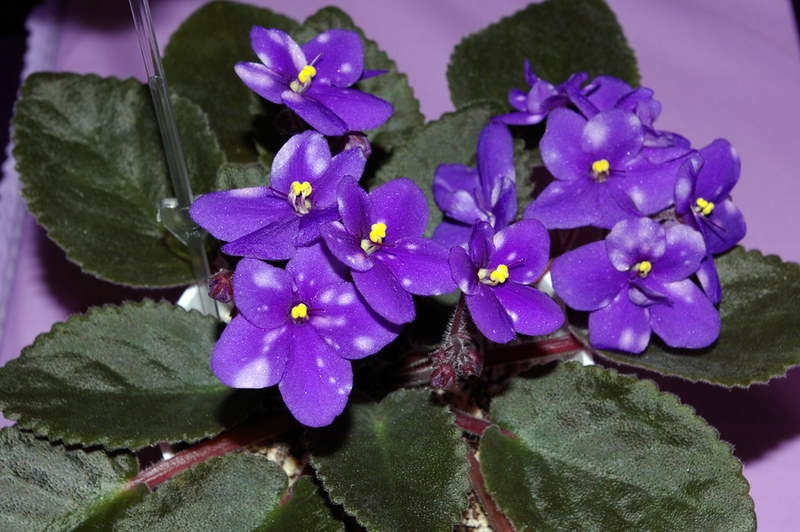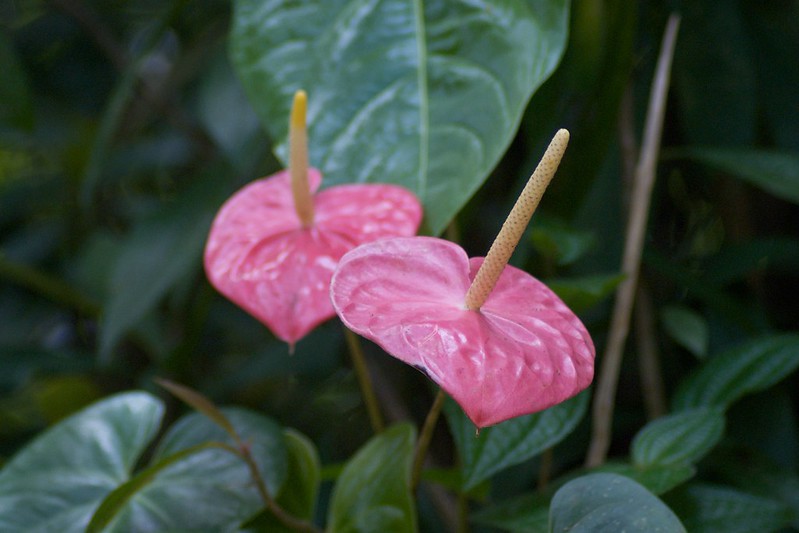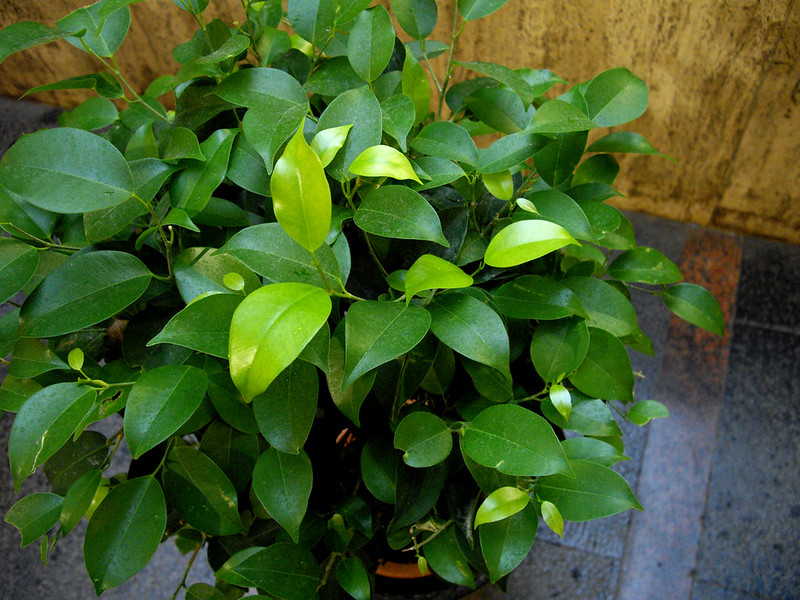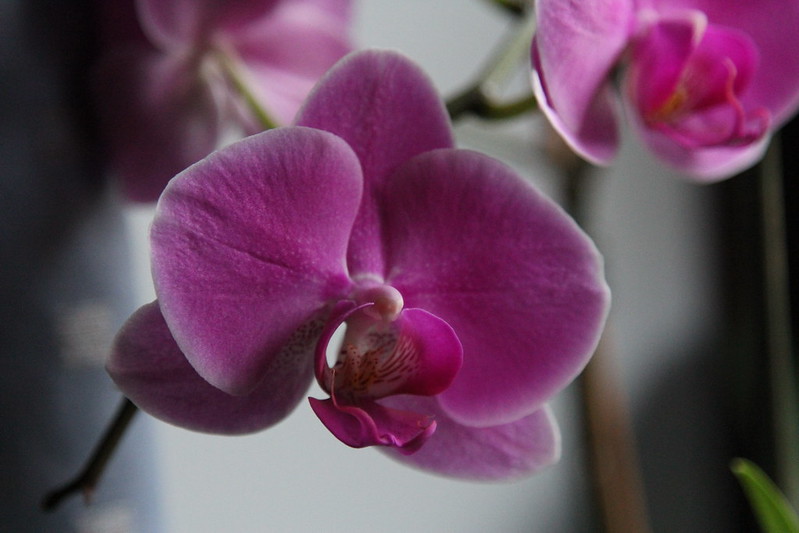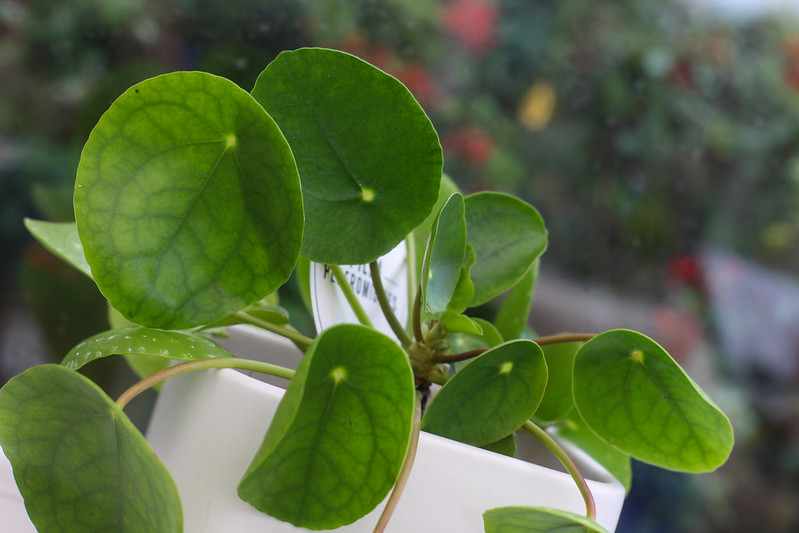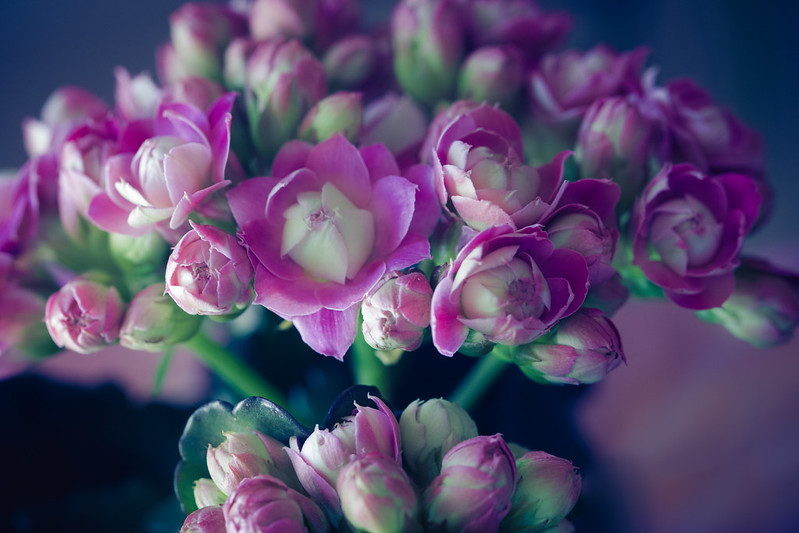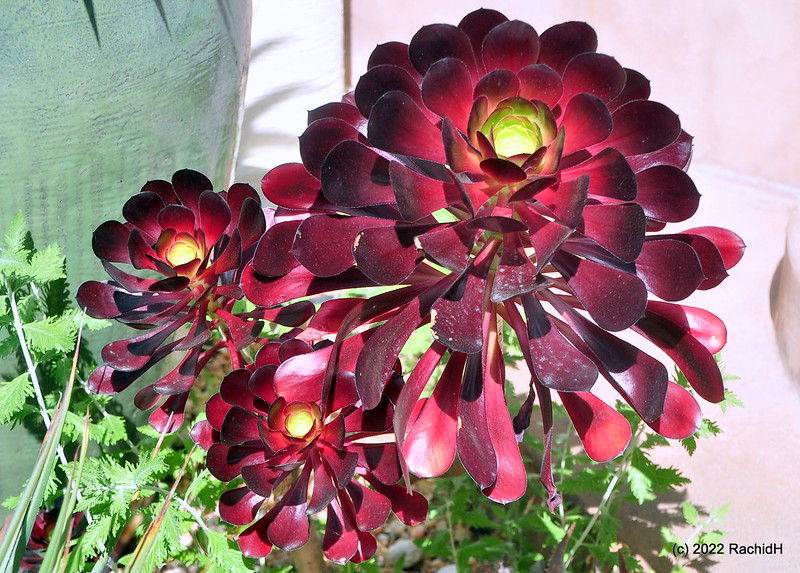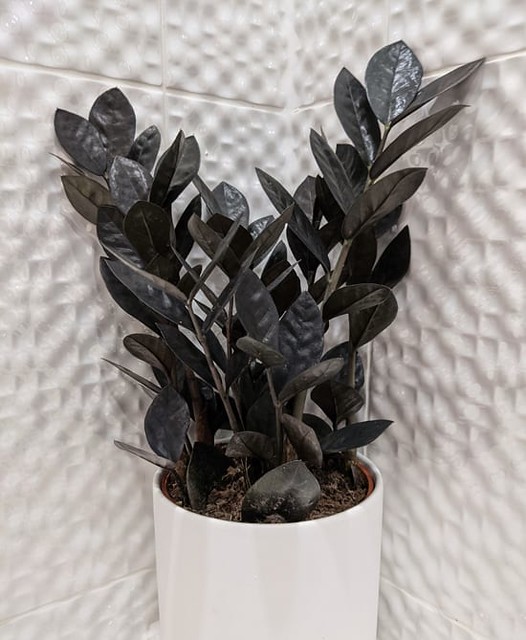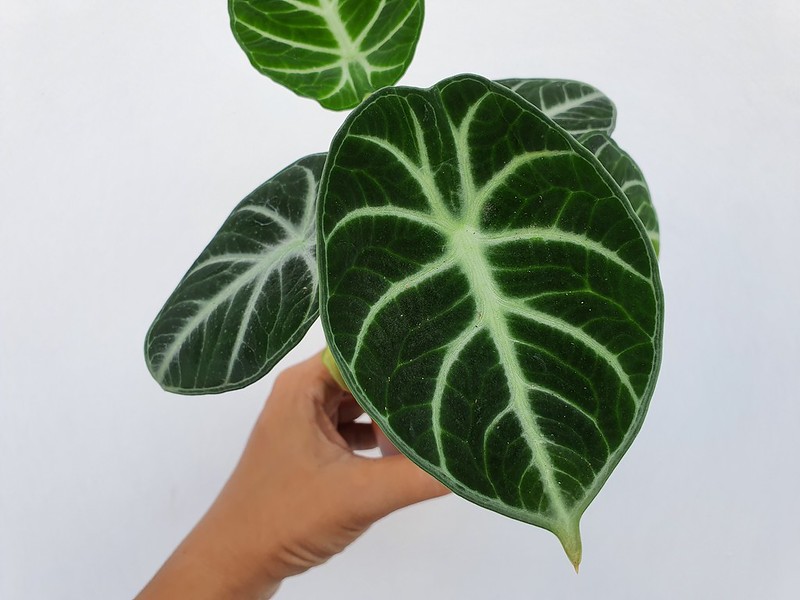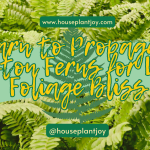HousePlantJoy is supported by our audience. When you purchase through one of our links, we may earn a small affiliate commission. As an Amazon Associate I earn from qualifying purchases. Your cost is not affected.
==================
Discover the art of cultivating green beauty with our guide to indoor foliage plants. Dive into a world of lush living and learn how to create a vibrant, thriving indoor garden.
Imagine waking up to the pleasant rustling of leaves in your bedroom or feeling the refreshing embrace of nature as you work from home.
Indoor foliage plants have become more than just decorative elements in our homes. They are works of art that can breathe life into any indoor space.
Indoor Foliage Plants / Flickr / RainFox CherryBlossomInRains
Indoor plants are at a new high as more and more people realize how beneficial it is to have a touch of nature indoors. These lush, leafy friends add aesthetics and contribute to our well-being.
Moreover, most indoor plants come from tropical regions. It means you will have various shapes and sizes to choose from. For example, delicate trailing cuties like String of Hearts and the Jade necklace vine are ideal for high shelves.
In contrast, large, glossy-leaved plants like the Elephant’s Ear or Kentia palm can alter empty corners into cozy, green retreats. Besides adding aesthetics to your indoors, indoor plants for foliage also help clean the air.
Furthermore, are you planning to embrace gothic or dark chic aesthetics? We also have a list of indoor black plants like san black coral.
In this article, we will take you on a delightful journey into the world of indoor foliage plants. You will explore their unique qualities, care tips, and how they can transform your indoor space.
We will introduce you to a selection of top indoor foliage plants. Together, we will learn how indoor plants adorn your home and enhance your well-being.
So, let’s begin!
Choosing Indoor Foliage Plants: What to Consider?
Indoor Foliage Plants / Flickr /Dan Jones
First thing first, you want a healthy houseplant for your indoors. Remember that not all houseplants are created equal, as they have different needs. It means you want a house plant that can thrive indoors. Here is how to shop for healthy indoor foliage plants.
Inspect Your Chosen Plant
A keen eye is your best tool when choosing indoor plants for foliage. Start inspecting your chosen plant by its foliage. Ensure it has vibrant, even-colored leaves free from discoloration, yellowing, or spots.
Moreover, inspect beneath the leaves and along the stems for hidden pests. In addition, check the soil’s moisture level, as it should be slightly damp but not soggy. White or light roots mean a healthy plant, whereas discolored or mushy ones mean it is a victim of root rot.
Assess Natural Light Requirement
Assessing available natural light indoors is critical for choosing the right plant. Note that light is the most crucial aspect of keeping your plants thriving. It is more important than watering and fertilizing. Light serves the same essential function for plants as food does for humans.
Calathea Orbifolia Tropical Plant in an Indoor Garden / Flickr / Dan Jones
There are three main categories of lighting:
Bright Light: South-facing windows in your home usually provide the most direct sunlight. It is also the brightest spot in most homes. So, if your room gets direct sunlight several hours a day, you have a bright light space. Plants like succulents, cacti, and many flowering plants thrive here.
Indirect Light: This type of light is gentler than direct sunlight. East or west-facing windows usually get indirect sunlight. These areas are ideal for a plethora of indoor foliage houseplants. Some popular tropical varieties include Pothos, snake plants, and philodendrons.
Low Light: A north-facing window in your home or spaces far from windows often has soft light. Choosing plants that can withstand low light in such areas is best. Some suitable low-light varieties include peace lilies, ZZ plants, and Chinese evergreens.
Thus, matching your plant’s light needs to your home’s available light is critical. Neglecting this aspect can lead to a plant that struggles to thrive or fails to flourish.
Consider Available Space and Size
When choosing indoor plants for foliage, consider the space and size. The available space inside your home should match the plant’s growth habits. Houseplants have different growth habits.
Variegated pothos / Flickr / Spurekar
For example, some exhibit exuberant vertical or bushy growth and need more growth space. In contrast, some plans maintain a compact stature, meaning they only need a little place to grow. Thus, when shopping for a plant, ensure its size aligns with your interior space. This helps your plant flourish without overcrowding or affecting the room’s aesthetics.
Moreover, balance is vital, as an overly large plant can overwhelm the space, while a petite one may seem lost.
Maintenance of Indoor Plants for Foliage
Maintenance consideration is paramount when selecting houseplants. So, be honest and assess your commitment level. Plants vary in care needs. While some need occasional attention, others want consistent love and nurturing.
Align your options with your willingness and ability to meet these needs. If you are a novice or have a tight schedule, opt for low-maintenance plants like succulents or a snake plant. However, if your commitment level is high, you can raise high-care species like orchids or ferns.
By matching your commitment level with your plant, you will have a thriving indoor space that suits your lifestyle.
Seasonal vs Evergreen Foliage Plants
Seasonality is another essential factor when choosing plants. There are two main categories of houseplants: seasonal and evergreen. Plants with seasonal growth patterns go dormant when the season is over. They may also not produce consistent blooms or may not thrive throughout the year.
In contrast, evergreens, like Pothos or Sansevieria, provide enduring greenery year-round. So, unlike other plants, you don’t have to worry about seasonal fluctuations.
Thus, if you aim to maintain an enduring green presence, opt for evergreen varieties. These plants are often low-maintenance, ensuring your living space remains lush and vibrant. They offer a continuous touch of nature regardless of the time of year.
Now, let’s discover what plants for foliage are ideal for your indoors. We will divide these plants into three categories so it is easy for you to pick one that best suits your home.
Video Credit: @myBageecha
Best Indoor Foliage Plants for Low-Light
Do you have a north-facing window in your home? Here are the plants you can grow indoors:
Snake Plant
Sansevieria Trifasciata / Flickr / Max Wei
The Snake Plant, the “mother-in-law tongue,” is the ultimate indoor plant champion. This resilient botanical wonder has two distinct forms. The first one is a towering variety with sturdy, strap-like leaves. The second is a dwarf rosette form that remains petite, only a few inches tall.
Moreover, snake Plants are a stellar option for indoor environments, whether you want vibrant green or striking yellow-edged leaves.
In addition, What sets them apart is their remarkable adaptability. These plants thrive in low-light conditions, surpassing the capabilities of most houseplants. They can endure extended periods of dry soil. The snake plant is a perfect option for those who often forget watering.
How to Care for?
- Low-light but tolerant of varying conditions.
- Allow soil to dry between waterings (every 2-6 weeks).
- Use a well-draining potting mix.
- It thrives in 70-90°F (21-32°C) range.
- Adaptable to low humidity; occasional misting helps.
- Use pots with drainage holes.
- Feed every 2 to 5 weeks during the growth season.
- Trim damaged leaves as needed.
Philodendron Vine
Philodendron Vine for Interior Foliage/ Flickr / Dan Jones
The Philodendron Vine from the Philodendron family is a popular interior foliage plant. Its graceful trailing stems with heart-shaped dark green leaves look stunning. Having this plant in your bedroom or living can add an elegant touch.
Moreover, while the plant prefers low-light conditions, it can tolerate bright light. Ideal for office and bedroom settings, it even flourishes under fluorescent lighting. Regular tip-pinching is beneficial to maintain a more compact, lush appearance.
It combines beauty and versatility, making it an excellent choice to elevate your indoor greenery.
How to Care?
- Thrives in low light but can adapt to bright conditions.
- Let the soil dry between waterings, generally every 1-2 weeks.
- Use a well-draining mix to avoid waterlogging.
- Maintain 70-90°F (21-32°C) and avoid extreme temperature fluctuations.
- Adaptable, but loves occasional misting or a nearby water tray.
- Choose pots with drainage holes.
- Feed with balanced, diluted fertilizer every 2-4 weeks in the growing season.
- Trim yellow or damaged leaves for a bushier appearance.
Pothos Vine
Pothos Vine / Flickr / Jo Zimny Photos
Want something robust and visually appealing to grace your living space? Look no further than Pothos Vine.
The Pothos Vine, a relative of philodendrons, is sometimes called devil’s ivy. These plants are an exemplary choice for interior foliage fans.
Pothos are low-maintenance and can thrive in varying light conditions. The aureus variety strikes yellow or off-white variegation, adding to its charm.
Moreover, since it thrives in low light, Pothos is a versatile choice for areas with little natural light. However, while the yellow variegation may fade in soft sunlight, the plant’s tenacity endures. It means your plant can still thrive and grace your indoors elegantly.
How to Care For?
- Low-maintenance indoor plants thrive in low to moderate indirect light.
- Allow the top 2-inch soil to dry between waterings. Be cautious not to overwater plants.
- Use a well-draining mix to avoid root rot. The standard indoor potting mix works well.
- Keep your plant in a temperature range of 65-80°F (18-27°C).
- Adaptable to various humidity levels. Occasional misting or using a humidity tray can be beneficial.
- Use pots with good drainage to prevent overwatering and root rot. Repot when the plant outgrows its container.
- Feed a balanced liquid fertilizer every 4-6 weeks during the growing season.
- Prune to manage size and encourage bushier growth.
San Black Coral
Sansevieria Trifasciata “Black Gold” / Flickr / Salfcs
The Black Coral is an ideal indoor foliage plant. This elegant houseplant combines striking aesthetics with ease of care. It makes Black Coral a perfect choice for seasoned plant fanatics and novices.
The plant has deep green, almost black leaves adorned with contrasting silver-green stripes. It is perfect for your living room or bedroom as it can infuse an air of sophistication into any indoor space.
Beyond its exquisite appearance, this plant is super resilient. It can thrive in low light conditions and enduring periods of neglect. The San Black Coral in Paradise adds a touch of mystique and greenery to your home. You will love how it elevates your indoor paradise to new heights.
How to Care For?
- It thrives in low to bright, indirect light.
- Allow the soil to dry between waterings (approximately every 2-6 weeks).
- Use a well-draining potting mix.
- Keep in a range of 70-90°F (21-32°C), avoiding drafts.
- Adaptable to various humidity levels; misting is optional.
- Choose pots with drainage holes to prevent overwatering.
- Feed with a balanced liquid fertilizer every 2-4 weeks during the growing season.
- Trim yellow or damaged leaves as needed.
Chinese Evergreen
Chinese Evergreen (Aglaonema) / Flickr / Marissa Anderson
Chinese Evergreen is an elegant plant for interior foliage. It has an alluring appearance marked by its striking silver or light gray-green patterns adorning its foliage. Native to Southeast Asia, this plant is an excellent choice for indoors.
Its native habitats show why it’s an ideal indoor foliage plant. In its native habitats, it thrives in the filtered sunlight beneath the forest canopy. This adaptation makes Chinese Evergreen suitable for indoor conditions with lower light levels.
Moreover, a noteworthy trait of the Chinese Evergreen is its growth pattern. Emerging from a central point, it develops tall stems as it matures. It would be best to trim its overgrown stems to maintain its compact form and encourage healthier growth.
In addition, one of the best aspects of Chinese Evergreen is its ability to communicate its needs. Like the peace lily, when it requires hydration, it shows its thirst by wilting. This intuitive nature makes it a delightful choice for pros and beginners.
How to Care For?
- It is adaptable to various light conditions. The plant can thrive in low light and bright spots, including fluorescent lighting.
- Watering is low-maintenance. You can keep the soil consistently moist or water sparingly every few weeks.
- Fertilize your plant once or twice a year in spring or summer with a general-purpose fertilizer.
- It is hardy and doesn’t demand natural light to thrive.
Best Indoor Foliage Plants for Medium-Light
Does your home have an east or west-facing window? Here are the indoor foliage plants you can grow:
African Violets
African Violets, Ness Blueberry Puff / Flickr / Bob Dilgard
African violets are cherished classics in the world of indoor foliage plants. Their charm lies in their ability to thrive in bright, indirect sunlight, making them perfect for indoors. In addition, they do not need direct sun exposure, ensuring they won’t suffer from sunburn.
One of their most attractive features is their capacity for extended blooming periods. However, you will have to place them in the correct location. That means you can enjoy their vibrant and colorful flowers for most of the year.
Moreover, African violets are low-maintenance. All they need is consistent soil moisture to thrive. Place your plant on windowsill tabletops or integrate it into more extensive indoor gardens. Their compact size and stunning foliage make them versatile additions to any indoor decor.
How to Care For?
- Place your African violets in bright, indirect sunlight. They prefer a north or east-facing window for filtered light.
- Keep the soil moist but not soggy—water from the bottom by placing the pot in a saucer and allowing the soil to absorb moisture. In addition, use room-temperature water to prevent shock.
- African violets enjoy higher humidity levels. Place a water tray near the plants or use a humidifier to maintain appropriate humidity.
- Feed your African violets with a balanced, water-soluble fertilizer every 4-6 weeks. It is best to fertilize them during their growing season (spring to early autumn).
- Repot your African violets when they outgrow their containers every 12-18 months. Choose a larger pot with good drainage.
- Remove spent or damaged leaves and flowers to encourage new growth.
- Rotate the pots periodically to ensure even growth. It also prevents the plants from leaning towards the light source.
Flamingo Flower
Flamingo Flower (Pink Anthurium) – Indoor Foliage Plants / Flickr / a200/a77Wells
Flamingo Flower with glossy, vibrant leaves is a beautiful plant for interior foliage. It serves as a striking backdrop for its captivating flowers.
The flower, known as a spathe, unfurls in pink, red, or white hues, adding color to your indoor space. Its ability to blend lush foliage with occasional, long-lasting blooms makes it unique.
In addition, its elegant aesthetics and low-maintenance care make it perfect for indoors. Flamingo Flower is a top option for those wanting to enhance the visual appeal of their indoors. You would love its leaves and occasional vibrant floral displays.
How to Care For?
- Water your plant during the active growing season (summer to fall).
- Let the soil dry out between watering, usually when the top inch becomes dry.
- Feed your Flamingo Flower every other month within the active growing season. Use a well-balanced, water-soluble houseplant fertilizer diluted to one-fourth strength for best results.
- After flowering, remove faded or withered flowers to encourage new growth and blooms.
- Flamingo Flowers thrive in a range of soil types. You can use loam, sand, clay, and acidic and alkaline soils.
- Consider using pots of varying sizes at different growth stages. You can plant two Flamingo Flowers in the same pot for an attractive display.
Weeping Fig
Weeping Fig / Flickr / Yumi Kimura
Weeping Fig stands as a prominent choice for indoor houseplant enthusiasts. The plant offers lush foliage and a touch of elegance. This Ficus variety and the Rubber Tree are highly favored for indoor greenery.
It features graceful, cascading leaves, creating a charming green curtain. It thrives in indirect light and adapts well to various indoor conditions.
In addition to being a low-maintenance plant, its air-purifying qualities make it an ideal option. You would love to see how it enhances your interior with its vibrant foliage.
The plant adds both aesthetic appeal and a breath of fresh, rich air to your indoor environment.
How to Care For?
- Weeping Figs thrive in a bright room with ample indirect sunlight. Morning direct sun is acceptable.
- Avoid moving your plant once you find the right spot, as it is sensitive to changes.
- Well-draining potting soil works well. You can use a soil-based mix with perlite, sand, and vermiculite for repotting.
- Keep the soil moist, but do not let it sit in water to prevent leaf drop and root rot.
- Nighttime temperatures between 65-70°F and daytime temperatures between 75-85°F are ideal. Maintain stable temperatures and provide high humidity.
- Weeping Figs are heavy feeders, so you must use slow-release pellets at the start of the growing season. Monthly fertilization in spring and summer is also beneficial.
Moth Orchid
Moth Orchid / Flickr / x70tjw
Are you looking to add a classic touch to your interior with indoor foliage plants? Place a moth orchid near your home’s eastern, shaded southern, or western window. These plants can continue to grow and bloom for years with minimal care.
Phalaenopsis, the popular moth orchid, is preferred for orchid cultivation in average homes. Its adaptability to indoor environments is remarkable. In addition, the striking blooms it produces make it ideal for interior decoration.
Native to Southeast Asia and Australia, moth orchid is a beautiful addition to any indoor. Its origins in these tropical regions aid its success, adding a touch of exotic beauty indoors.
How to Care For?
- Orchids thrive in bright, indirect light, with east-facing windows being ideal.
- Indirect western or southern light is acceptable, but north-facing windows lack enough illumination.
- Cultivate your orchids in a bark mixture with sphagnum moss. Pure sphagnum moss is also an option but needs more care to prevent overwatering.
- Overwatering is more detrimental than underwatering. Let the planting material dry out between watering. In addition, your plants in bark need more frequent watering than those in moss.
- Maintain temperatures between 70-80°F during the day and above 60°F at night. Avoid extremes (above 95°F or below 55°F) and provide adequate humidity to prevent wrinkled leaves.
- Use orchid-specific fertilizer as directed. Feed bi-monthly, except during the low-light winter season.
Chinese Money Plant
Chinese Money Plant for Interior Foliage / Flickr / Kevin Walsh
A new but popular plant for foliage, the Chinese Money Plant, is an exceptional option. Not only is it cherished for its elegant blooms but for its lush, round green leaves as well.
Its coin-shaped leaves and distinctive appearance can light any indoor space. Thanks to its easygoing nature, it is a favorite among pros and beginners.
Moreover, one cute feature of the Chinese Money Plant is it produces “baby” plants, or offsets, known as “pups.” These offspring sprout at the base of the plant and can be separated and potted.
Thus, you can share this delightful plant with your friends or expand your indoor collection.
How to Care For?
- Maintain a consistent watering schedule and let the soil dry before rehydration.
- In the warmer months, water once a week, while in the cooler winter, adjust to every two weeks.
- Feed a balanced, water-soluble fertilizer to promote healthy growth and foliage.
- Rotate your plant occasionally to encourage even growth.
- The Chinese Money Plant loves a warm environment, so keep the temp above ten °C (50°F).
- While it enjoys sunshine, place it away from direct sunlight to prevent sunburn.
- Wipe off its leaves with a damp cloth to maintain its glossy appearance.
Best Indoor Foliage Plants for Bright Light
Take advantage of south-facing window in your home and grow these bright light plants:
Florist Kalanchoe
Florist Kalanchoe / Flickr / Carol VanHook
These bright light succulents stand out as top plants for interior foliage. They strike vibrant, cheerful flowers and thick, water-storing leaves. In addition, their ability to adapt to the dry indoor air of winter makes them an excellent choice.
Although their blooms last longer, coaxing them to rebloom can be challenging. However, you can still enjoy their lush foliage with minimal care.
How to Care For?
- The key to successful Kalanchoe care is not to overwater your plant. Only water it when the top few centimeters of the soil have dried out.
- In the winter, water sparingly to prevent overwatering. Always ensure proper drainage to let excess water escape.
- Feed your plant monthly during the active growing seasons (spring and summer).
- Remove any dead or faded flowers to encourage a neat appearance and future growth.
Swiss Cheese Plant
Swiss Cheese Plant (Monstera Adansonii) / Flickr / Spurekar
The Swiss Cheese Plant is a popular foliage tree plant. It is cherished for the charming perforations that form on its large leaves. These unique traits have made it a darling among indoor gardeners.
Moreover, the plant can reach impressive sizes even when it is indoors. It offers a bold and exotic presence that can transform any indoor space.
Whether the classic Monstera or the variegated version, it promises an eye-catching addition to your home decor.
How to Care For?
- Place your plant in filtered, indirect light to mimic its tropical environment.
- Your plant loves humidity, so the ideal temperature is around 70°F.
- Rotate your plant when you notice a side reaching for the sunlight. It encourages even growth.
- The Swiss Cheese Plant needs moderate watering. Thus, assess its watering needs first before you water.
- Your plant thrives in peaty and well-drained soil.
Indoor Black Plants for Dark Thumbs
Aeonium Black Rose Succulent
Indoor Black Plants / Flickr / Rachid H
Are you looking for an alluring, dark-hued addition to your indoor garden? Look no further than the Aeonium Black Rose or the “Black Rose.
It is a lovely choice for those dreaming of a gothic or dark chic garden. This unique succulent strikes deep, velvety, almost-black rosettes that set it apart.
Moreover, as one of the best indoor black plants, it is best suited for sunny indoor spots. It needs plenty of natural light to maintain its rich, dark coloration.
In addition to its striking appearance and easy nature, the Aeonium Black Rose adds a touch of elegance and intrigue to your space.
How to Care For?
- Only water your plant when the soil is dry, as it requires minimal watering.
- Let the soil dry out between waterings to prevent overhydration.
- Provide ample sunlight to maintain your plant’s health and striking coloration.
- Your plant needs at least six hours of direct sunlight for proper growth.
- It thrives in the temperature range of 70-85°F.
Raven ZZ
Raven ZZ: Indoor Black Plants / Flickr / Tom Knight
Are you looking for a black-hued gem to grace your indoor haven? Have a look at the Raven ZZ plant!
Known for its stunning ebony foliage, the Raven ZZ is a lovely option for an indoor black plant garden. It exudes an air of sophistication and allure to your interior. The plant strikes dark, glossy leaves that bring a touch of luxury to your space.
Moreover, resilient and low-maintenance, the Raven ZZ is a silent yet bold statement. It only demands a little attention and care, making it an ideal choice for both beginners and pros.
However, place your plant in a well-lit spot away from direct sunlight, and let its deep, dark beauty enhance your indoors.
Alocasia Black Velvet
Indoor Black Plants / Flickr / Benjamin Ho
The Alocasia Black Velvet is one of the most beautiful indoor black plants. It strikes exotic allure and dramatic elegance. The plant has heart-shaped and obsidian foliage, making it look like a jewel.
Moreover, delicate silvery veins adorn its rare, hard-to-find leaves, adding sophistication. This unique indoor black plant can elevate any interior.
How to Care For?
- Let your plant soak in bright, indirect light for about six hours daily.
- Allow the soil’s top half to dry out before watering.
- Keep your plant in temperatures between 60-80°F.
- Alocasia Black Velvet loves high humidity levels.
- Feed it during active growth in warmer months.
Wrapping Up
That is all about indoor foliage plants! In our exploration, we have discussed a diverse array of green companions. These plants have enriched our interiors, from the alluring Alocasia Black Velvet to the lovely Chinese Money Plant. In addition, we have also learned how to care for and keep them happy.
Raising plants means inviting nature tranquility and appreciating the beauty within our walls. So, what plant are you going to bring indoors? Let us know in the comments below.
FAQs
Can I Grow asparagus fern indoors?
Yes! One can grow asparagus fern indoors. It is a popular houseplant known for its feathery, green foliage. The plant thrives indoors if you keep it in the right environment.
What houseplants should I choose to create a black garden indoors?
It is easy to create a gothic black garden indoors. However, you have to choose black or dark-colored plants. For example, Black Magic Taro is famous for its striking black leaves. In addition, plants like the Raven ZZ and Queen of the Night are also excellent options.
Welcome to House Plant Joy, Your Ultimate Green Aasis for All Things Botanical!
At House Plant Joy, we are all about nurturing your love for plants! From beginner to pro, we’re your go-to source for gardening and plant care tips. We aim to bring your botanical dreams to life. Whether you’re just starting or a master of gardening, we’ve got you covered.
Our aim is simple: to help you grow and flourish alongside your green companions. We nurture your plant passion, offer expert advice, and build a plant-loving community.
Join us on Social Media, and let’s grow together, one plant at a time!
Facebook: www.facebook.com/houseplantjoyblog
Instagram: instagram.com/houseplantjoy20
Pinterest: pinterest.com/houseplantjoy
Twitter: twitter.com/houseplantjoy

